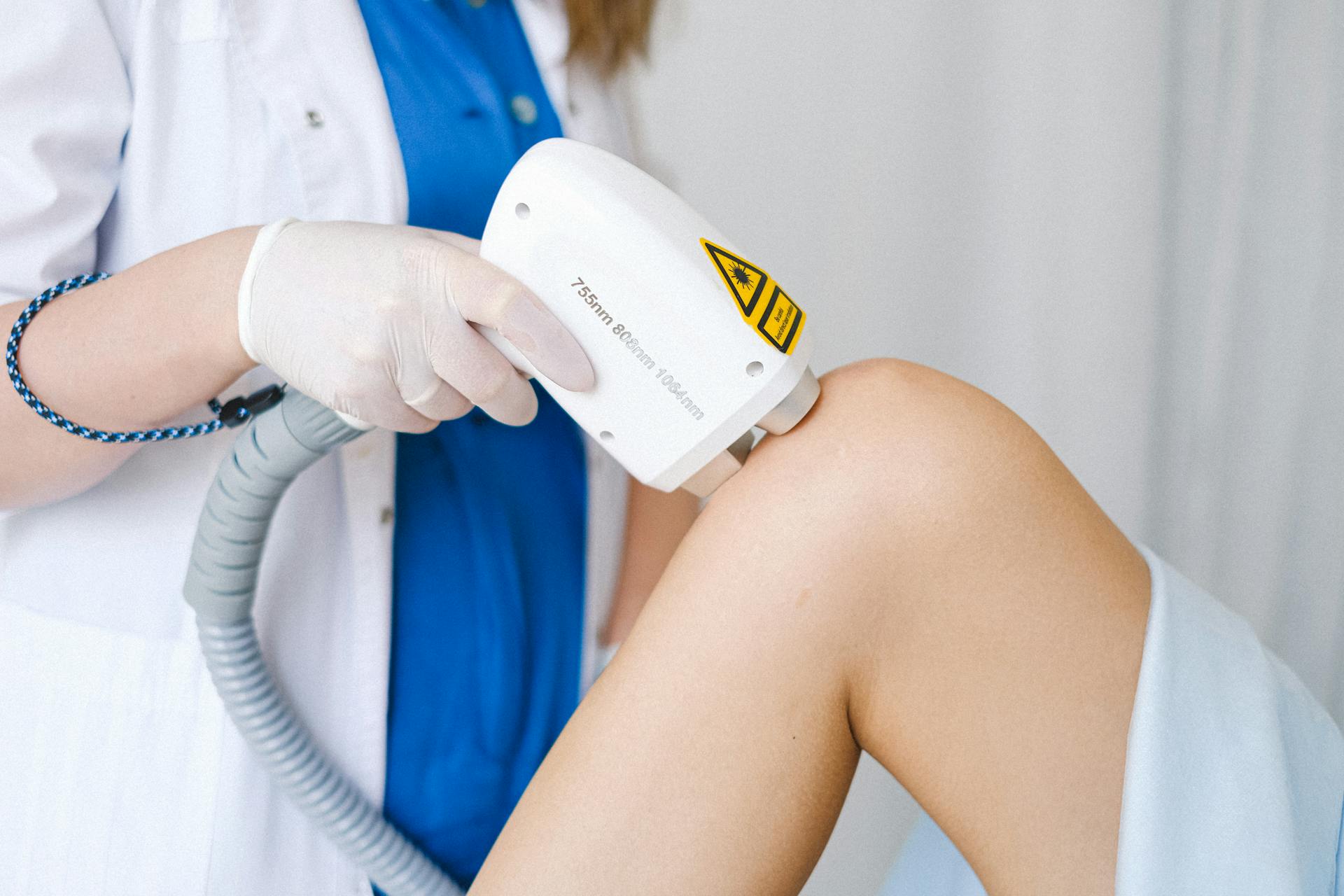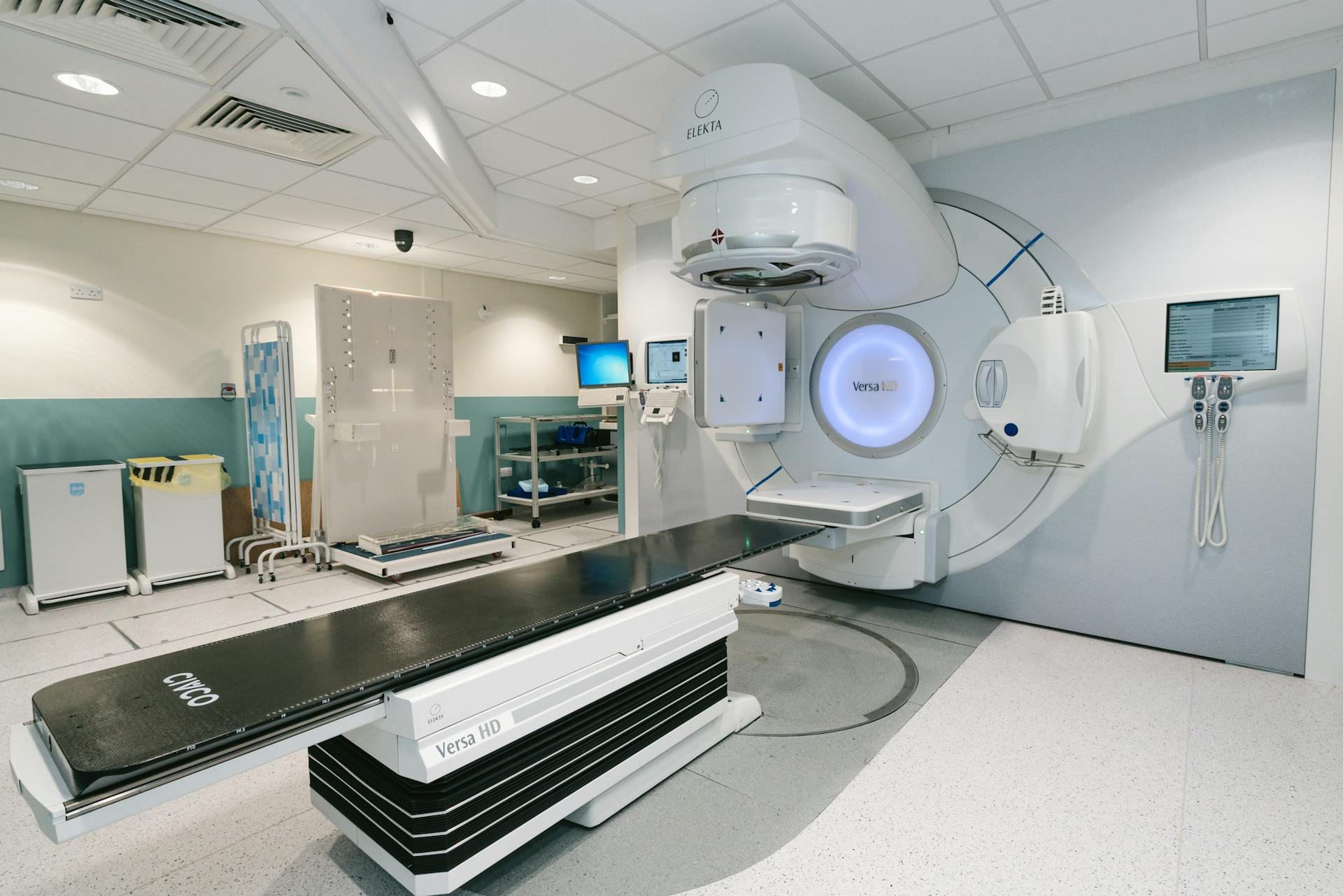
Insurance coverage for hyperbaric oxygen therapy varies widely depending on the insurance provider and the specific condition being treated. Some insurance plans may cover HBOT for specific conditions like carbon monoxide poisoning or decompression sickness.
If you're considering seeking hyperbaric oxygen therapy, it's essential to check with your insurance provider to see what's covered and what's not. Some insurance plans may require a doctor's referral or pre-approval before covering HBOT.
A single session of hyperbaric oxygen therapy can cost anywhere from $50 to $200, depending on the location and duration of the treatment. This can add up quickly, especially if you need multiple sessions for a specific condition.
What Insurance Covers
Insurance coverage for hyperbaric oxygen therapy (HBOT) varies, but there are specific conditions that are typically covered. These include brain abscess, crush injuries, and certain types of vision loss.
The FDA has approved HBOT for 14 conditions, often referred to as "on-label" conditions. Most insurance plans cover some or all of the cost of HBOT when it is given to the patient for one of these FDA-approved conditions.

Some of the most common conditions that are covered by insurance for HBOT include radiation tissue damage, diabetic lower extremity wounds, and failed skin grafts and flaps.
Here are some of the specific conditions that are covered by insurance for HBOT:
- Radiation tissue damage
- Diabetic lower extremity wounds (diabetic foot ulcers)
- Failed skin grafts and flaps
- Crush injury & other acute traumatic ischemias
- Necrotizing soft tissue infection
- Carbon monoxide poisoning and smoke inhalation
- Central retinal artery occlusion
- Non-healing wounds
- Gas gangrene
- Decompression sickness
- Idiopathic sudden sensorineural hearing loss (ISSHL)
Insurance companies may also cover HBOT for other conditions, depending on the evidence of its effectiveness. Some commercial insurance companies will approve HBOT for off-label conditions if they deem treatment as medically necessary.
A different take: Health Insurance Companies That Cover Alternative Medicine
Pre-Treatment Process
Before undergoing hyperbaric oxygen therapy, patients typically undergo a pre-treatment process to prepare them for the treatment. This process can vary depending on the individual's medical condition and the severity of their symptoms.
Most hospitals and treatment centers require patients to undergo a physical examination to assess their overall health and identify any potential contraindications for hyperbaric oxygen therapy. A doctor will typically review the patient's medical history and current health status to determine if they are a good candidate for treatment.
If this caught your attention, see: What Does Medical Insurance Cover

The pre-treatment process may also involve a series of tests, such as blood work and imaging studies, to monitor the patient's vital signs and detect any potential complications. For example, patients with a history of lung disease may require additional testing to ensure that their lungs can safely handle the increased oxygen levels.
In some cases, patients may be required to sign an informed consent form before undergoing hyperbaric oxygen therapy. This form outlines the potential risks and benefits of the treatment, as well as any potential side effects or complications.
Additional reading: Hyperbaric Oxygen Therapy
Coverage and Exceptions
Insurance coverage for hyperbaric oxygen therapy (HBOT) varies depending on the condition being treated. The FDA currently recognizes 14 conditions that are typically covered by insurance.
Most insurance plans cover HBOT for FDA-approved conditions, which include brain abscess, crush injuries, and certain types of vision loss. However, insurance coverage can vary from plan to plan.
Some of the most common conditions that are covered by insurance for HBOT include radiation tissue damage, diabetic lower extremity wounds, and failed skin grafts and flaps. These conditions are often referred to as "on-label" conditions.
Additional reading: Insurance Cover or Coverage
Here are some examples of conditions that are typically covered by insurance for HBOT:
- Radiation tissue damage
- Diabetic lower extremity wounds (diabetic foot ulcers)
- Failed skin grafts and flaps
- Crush injury & other acute traumatic ischemias
- Necrotizing soft tissue infection
- Carbon monoxide poisoning and smoke inhalation
- Central retinal artery occlusion
- Non-healing wounds
- Gas gangrene
- Decompression sickness
- Idiopathic sudden sensorineural hearing loss (ISSHL)
Insurance companies may also cover HBOT for other conditions, depending on the evidence of its effectiveness. However, treatment for conditions not yet approved by the FDA is generally not covered by insurance and is not available at hospital-based hyperbaric centers.
Treatment and Payment
Hyperbaric oxygen therapy can be a game-changer for many medical conditions, but the cost can be a concern. Fortunately, there are several payment options available to help manage expenses.
You can use funds from your Health Savings Account (HSA) to pay for HBOT treatments, allowing you to use pre-tax dollars and potentially saving you money.
We also accept Care Credit, a healthcare credit card that offers financing options to cover medical expenses. This can be a helpful option if you need to spread the cost of treatment over time.
If your insurance does cover HBOT, you may have to pay a copay, deductible, or coinsurance, depending on your specific insurance plan. Most insurance companies require prior authorization to cover HBOT treatments.

After treatment, Hyperbaric Health will provide you with a superbill, which includes detailed information for insurance reimbursement. The superbill includes provider information, patient details, description of services rendered, CPT codes, ICD-10 codes, and total charges.
You can use the superbill to request reimbursement from your insurance company. To do this, you'll need to submit the superbill along with any additional required documentation.
Finding and Receiving Treatment
You can find out if your insurance covers hyperbaric oxygen therapy by calling a patient care coordinator at 516-588-1831.
To determine if you're a good candidate for HBOT, you can also take advantage of free phone call info-sessions that cover cost and insurance coverage.
Calling the number will provide you with more information about your insurance's coverage for HBOT, as well as help you determine if you're a good candidate for treatment.
During the info-sessions, you can discuss any questions or concerns you have about HBOT and its coverage.
You can get a better understanding of your insurance coverage and whether HBOT is right for you by speaking with a patient care coordinator.
A different take: How Many Physical Therapy Sessions Does Insurance Cover
Understanding HBOT

Hyperbaric oxygen therapy (HBOT) is a medical treatment that delivers pure oxygen while the body is experiencing increased atmospheric pressure. This increased oxygen can help tissues heal faster, reduce inflammation, and fight infection more effectively.
HBOT involves breathing pure oxygen in a pressurized room or chamber, allowing your lungs to gather more oxygen than they would at normal air pressure. This can be especially helpful for conditions like carbon monoxide poisoning, where high levels of oxygen can quickly remove carbon monoxide from the bloodstream.
HBOT is a safe and effective treatment for a variety of conditions, including diabetic wounds, radiation tissue damage, and sudden hearing loss. The treatment is often used in combination with other medical therapies to enhance their effectiveness.
The cost of HBOT varies depending on the number of treatments required, the location of the treatment center, and the insurance coverage.
Understanding HBOT
Hyperbaric oxygen therapy (HBOT) is a medical treatment that delivers pure oxygen while the body is experiencing increased atmospheric pressure.

HBOT involves breathing pure oxygen in a pressurized room or chamber, allowing your lungs to gather more oxygen than they would at normal air pressure. This increase in oxygen can help tissues heal faster, reduce inflammation, and fight infection more effectively.
The high-pressure environment of HBOT can accelerate healing and reduce the risk of infection for severe burns, making it a valuable treatment in burn units.
HBOT can also be used to treat carbon monoxide poisoning by quickly removing carbon monoxide from the bloodstream.
Decompression sickness, a condition often experienced by divers, can be life-threatening, but HBOT helps eliminate the nitrogen bubbles that form in the bloodstream.
HBOT is a safe and effective treatment, but it can be expensive, with the cost varying depending on the number of treatments required, the location of the treatment center, and the insurance coverage.
By increasing oxygen levels in the body, HBOT can improve blood flow and accelerate the healing process for diabetic foot ulcers, which are notoriously difficult to treat.
HBOT can also help repair tissues damaged by radiation therapy, often used in cancer treatments, and improve the success rate of skin grafts and flaps by enhancing blood flow and oxygenation.
The increased oxygen and pressure of HBOT can put 10 to 20 times more oxygen directly into your body's tissues, resulting in many therapeutic effects in the healing of wounds, body tissues, infections, and more.
What a Treatment Feels Like?
A hyperbaric treatment can feel like flying in an airplane due to the air pressure changes.
The air pressure changes can cause a sense of fullness.
This feeling can be relieved using simple techniques that a professional from the HBOT team will explain to you.
During a two-hour treatment, you can relax, take a nap, read a book, listen to music, or watch TV.
The hyperbaric chamber has comfortable seating and air conditioning to enhance your experience.
Several locations use multiplace hyperbaric chamber therapy, which allows several people to be treated simultaneously.
Frequently Asked Questions
How do you qualify for hyperbaric oxygen therapy?
You may qualify for hyperbaric oxygen therapy if you have a condition that involves tissue damage, gas bubbles in the blood, or inadequate blood flow, such as carbon monoxide poisoning or severe injuries. Conditions that require HBO treatment are typically life-threatening or have a high risk of long-term damage if not treated promptly.
Who is a good candidate for hyperbaric oxygen therapy?
Individuals suffering from conditions that impair oxygen delivery to the body's tissues, such as air bubbles in blood vessels, decompression sickness, carbon monoxide poisoning, or serious trauma, may be good candidates for hyperbaric oxygen therapy. This treatment can help alleviate symptoms and promote healing.
Sources
- https://huelightusa.com/hyperbaric-oxygen-therapy-insurance-coverage/
- https://hyperbarichealth.io/understanding-insurance-coverage-for-hyperbaric-oxygen-therapy-hbot/
- https://www.hyperbaricmedicalsolutions.com/blog/hyperbaric-oxygen-insurance-coverage
- https://hyperbaricsorlando.com/does-insurance-cover-hyperbaric-oxygen-therapy/
- https://www.advocatehealth.com/health-services/wound-care/assessment-treatment/hyperbaric-oxygen-therapy
Featured Images: pexels.com


